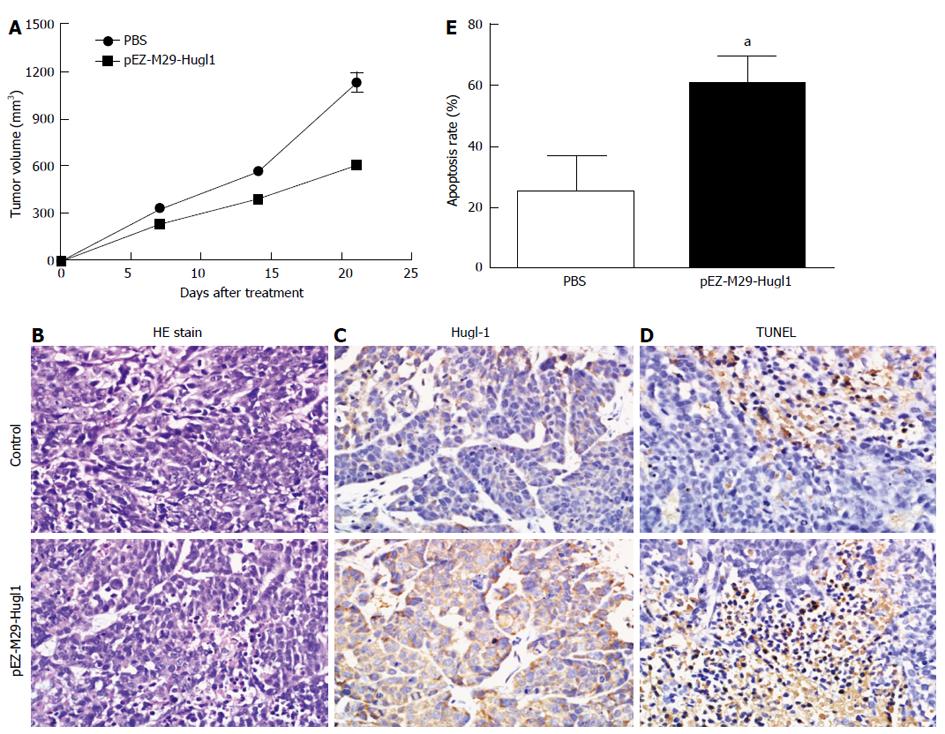Copyright
©2013 Baishideng Publishing Group Co.
World J Gastroenterol. Jul 14, 2013; 19(26): 4127-4136
Published online Jul 14, 2013. doi: 10.3748/wjg.v19.i26.4127
Published online Jul 14, 2013. doi: 10.3748/wjg.v19.i26.4127
Figure 4 Effect of Hugl-1 on xenograft tumor in vivo.
A: Cells were injected subcutaneously into nude mice, and with one group of mice receiving pEZ-M29-Hugl1-treated cells and another receiving phosphate buffered saline (PBS). Tumor volume was measured at 7-d intervals for 21 d; B: Tumor sections were observed by hematoxylin and eosin (HE) staining (× 400); C: Expression of Hugl-1 in tumor tissues was analyzed by immunohistochemistry. Many cells were strongly positive for Hugl-1 in the pEZ-M29-Hugl1-treated tumor sections (× 400); D: Representative photomicrographs showing transferase-mediated dUTP nick end-labeling (TUNEL) staining for evidence of apoptosis in transplantation tumors undergoing various treatments (× 400); E: Quantitative analysis of apoptotic cells in tumors treated with PBS or pEZ-M29-Hugl1. Apoptotic cells, shown by TUNEL, were significantly increased in tumors treated with pEZ-M29-Hugl1. Data are presented as mean ± SD (× 400). aP < 0.05 vs the pEZ-M29-eGFP-treated and PBS-treated groups.
-
Citation: Song J, Peng XL, Ji MY, Ai MH, Zhang JX, Dong WG. Hugl-1 induces apoptosis in esophageal carcinoma cells both
in vitro andin vivo . World J Gastroenterol 2013; 19(26): 4127-4136 - URL: https://www.wjgnet.com/1007-9327/full/v19/i26/4127.htm
- DOI: https://dx.doi.org/10.3748/wjg.v19.i26.4127









